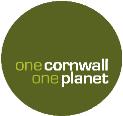 |
|||||||||||||||||||||||||||||||||||||||||||||||||||||||||||||||||||||||||||||
 |
|||||||||||||||||||||||||||||||||||||||||||||||||||||||||||||||||||||||||||||
Cornwall Council democracy The first elections for the newly formed unitary authority of Cornwall Council were held on 4 June 2009. The next full elections were on 2 May 2013 and then again on 4 May 2017 There are 123 Cornwall Councillors. Each councillor represents one electoral division, except in Bude, where 2 councillors represent one larger division. If you do not know who your councillor is, go to the Cornwall Council website at councillors where there is a full listing of councillors. Alternatively, go to the page where you can insert your postcode and the site will tell you who your councillor is. In the first Council of 2009-13, there was a joint administration formed by the Conservative group and the Independent group. In the 2013-2017 Council, the Liberal Democrats formed the largest group, but without an overall majority and they joined forces with the Independent group to form a Lib Dem/Independent administration. After the May 2017 elections, the Conservatives formed the largest group with 46 members but this was not sufficient to form a majority. They were unable to reach agreement with the Independent group to form an administration. Then the Liberal Democrat group (37 members) formed a joint administration with the Independent group (30 members). At the Bodmin St Petroc by-election on 8 June, another Liberal Democrat was elected to take the Lib Dem numbers up to 38. The Leader appoints members to the Cabinet. The composition of the Cabinet as from May 2020 is as follows.
For more details on the areas covered by each portfolio holder, see Portfolio responsibilities Groups on Cornwall Council The composition of most of the committees within Cornwall Council is determined by what is known as political proportionality whereby each “group” is allocated a number of seats in proportion to the overall balance of seats between the groups across the council. The groups are generally synonymous with the political parties, e.g. Conservative, Liberal Democrats, Labour, Mebyon Kernow. However, it is not obligatory that members of groups on the Council are from any particular political party. Groups can be formed by any number of two or more councillors who choose to get together for these purposes. The regulations guiding the formation of groups are The Local Government (Committees and Political Groups) Regulations 1990. Those councillors who stand as independents generally form an “Independent” group. In previous Councils, I did not join the Independent group, first sitting as a Standalone member in 2009-2013, then joining with the Green party member in 2013-2017 as the non-aligned group. After the May 2017 elections, I joined the Independent group. In July 2020, I resigned from the Independent group because of what I felt was the failure of the group to take seriously the Cormac health and safety incident. In August, a new group was formed called the Independent Alliance comprising Dulcie Tudor (ex Lib Dem), Andrew Wallis (ex Independent) and myself. The groups, as at August 2020. are as follows. Note that Cherilyn Mackrory resigned from being the councillor for the St Mewan division in early 2020 following her election as M.P. for Truro and Falmouth. Because of the Coronavirus pandemic, no by-election has been held for that division and the seat remains vacant.
|
|||||||||||||||||||||||||||||||||||||||||||||||||||||||||||||||||||||||||||||